Part of a series of articles titled Curious Collections of Fort Stanwix, The Oneida Carry Era.
Previous: Mortar Bombs
Next: Spanish Coins
Article
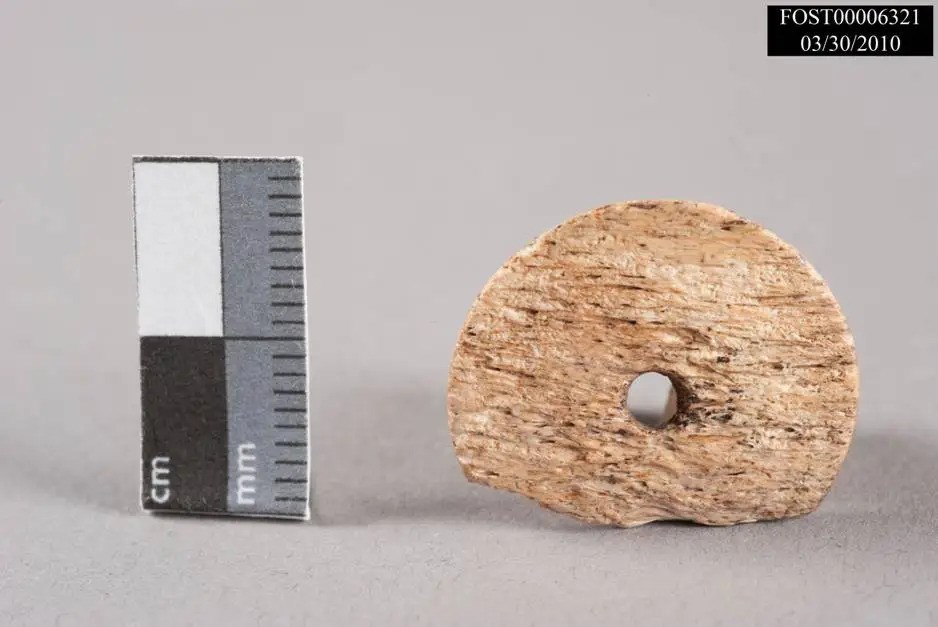
National Park Service
These bone buttons, a cow rib bone from which buttons were cut, and the bit used to make them are poignant reminders that Fort Stanwix in the 18th century was the frontier. Soldiers’ reports speak of standing guard in freezing temperatures with inadequate clothing and bare feet. Supplies were hard to come by, and any skills that could be put to use on-site were surely taken advantage of.
While these objects may seem quite mundane, they in fact tell an interesting story regarding inventive problem solving by those stationed at the fort. Much like they do today, buttons are prone to fall off and become lost. Today, this issue can be mended fairly simply with the use of a store-bought replacement button. However, at Fort Stanwix during the American Revolution, obtaining a button was far more difficult than it is today.
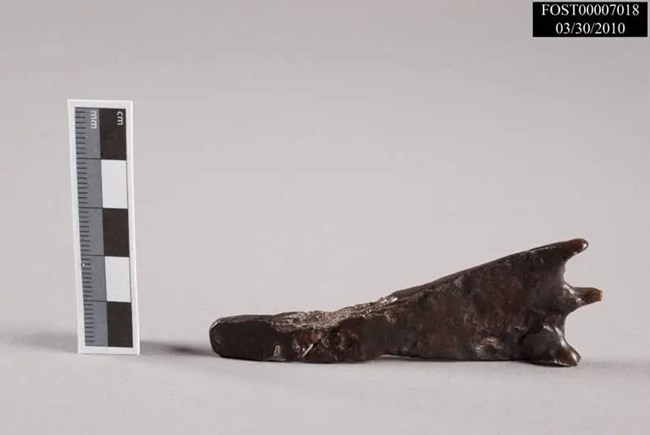
National Park Service
Plain bone buttons were utilitarian in nature and secured undergarments. While treated bone disk buttons (covered) would have been used on garments to secure the clothing and as ‘display’ elements (such as buttons on a coat cuff). The production of bone buttons left behind “button blanks” – sections of cow long (or leg) bones that look like it had had several bites taken out of the edge.
Often, if a button was lost, its replacement would have to be made by hand. This process begins with a flat piece of bone. A metal hand tool called a “bit” would be pressed into the bone and rotated as a drill in order to cut out a new button. This new button would be polished smooth then a brass loop would be fitted into its center hole. These homemade buttons would allow anyone to keep their clothing secured and fastened, even when manufactured buttons were unavailable.
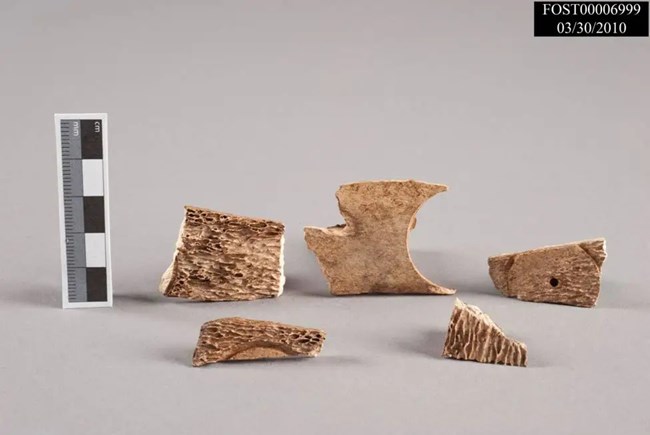
National Park Service
National Park Service archeologist Amy Roache-Fedchenko, Ph.D. calls these buttons and associated materials some of her favorite artifacts in the collection “because they tell us more about what people were doing here at Fort Stanwix. The process of making buttons usually doesn’t cross our minds, but the soldiers and civilians who lived here relied upon their wits to supplement their material needs.”

National Park Service
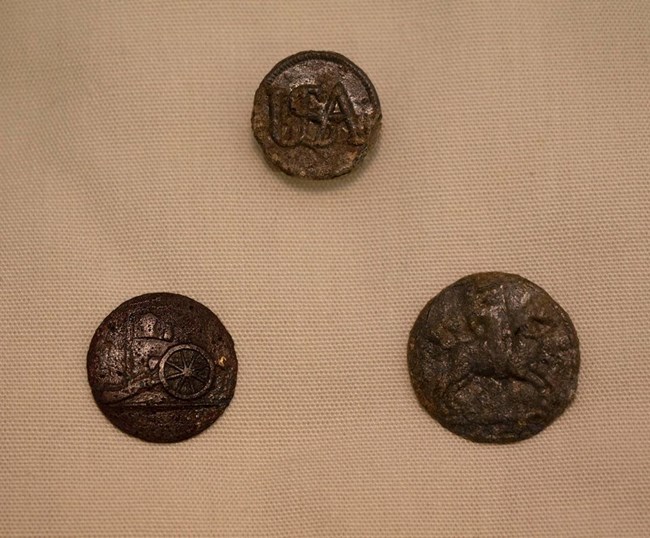
National Park Service
Buttons were a common find during the 1970s archeological excavations. Particularly in the barracks and casemate areas (See Table 15, below). Some specimens could be identified by their markings as post-1775 in vintage. A total of 558 buttons were recovered, and in order to handle this large group, they were divided into types based on the method of manufacture and the materials used. It was not possible to classify an additional 55 specimens because they are too fragmentary.
Basically, the buttons at Fort Stanwix fall into two size ranges: 11 to 20 mm. and 18 to 25 mm. in diameter. Some types are generally larger than others which accounts for the overlap. However, the number of specimens within these ranges is so high that it can be stated with confidence that, despite variations from one type to another, only two sizes served the needs of the soldiers: the smaller specimens were probably used on waistcoats, and in lieu of knee buckles; the larger ones on regimental coats and the waist band of pants. Diameters were measured from edge to edge and the thickness includes the length of the shank.
Aside from bone buttons, buttons made of horn, brass, and other metals were found on the site as well. The image to the right illustrates some of the other styles of button found on site.
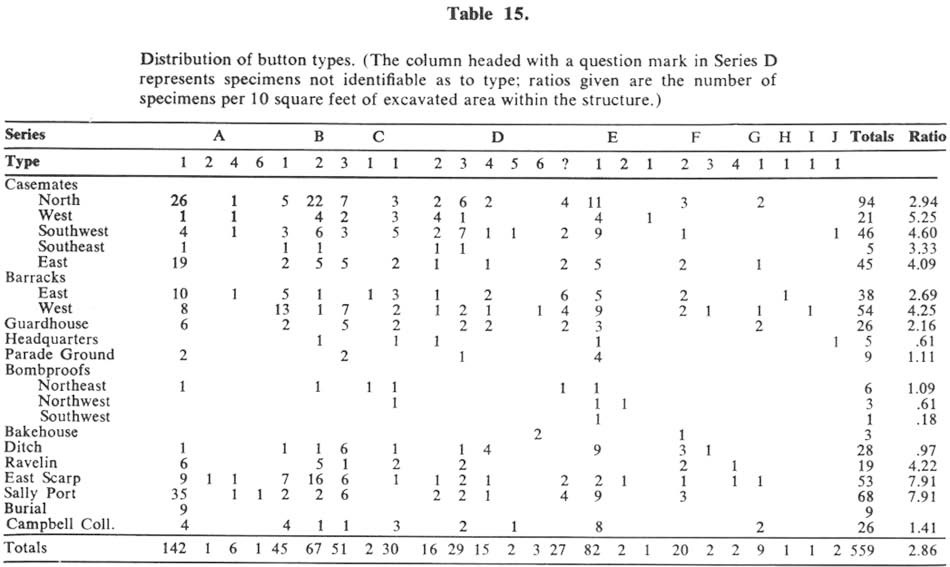
National Park Service
Casey & Lowe, Archaeology & Heritage. www.caseyandlowe.com.au/bone-button-manufacturing. Accessed on 10/4/2022
Philadelphia Archaeological Forum. www.phillyarchaeology.net/philly-archaeology/artifactindex/april-2018-artifact-of-the-month. Accessed on 10/4/2022
Part of a series of articles titled Curious Collections of Fort Stanwix, The Oneida Carry Era.
Previous: Mortar Bombs
Next: Spanish Coins
Last updated: November 4, 2022